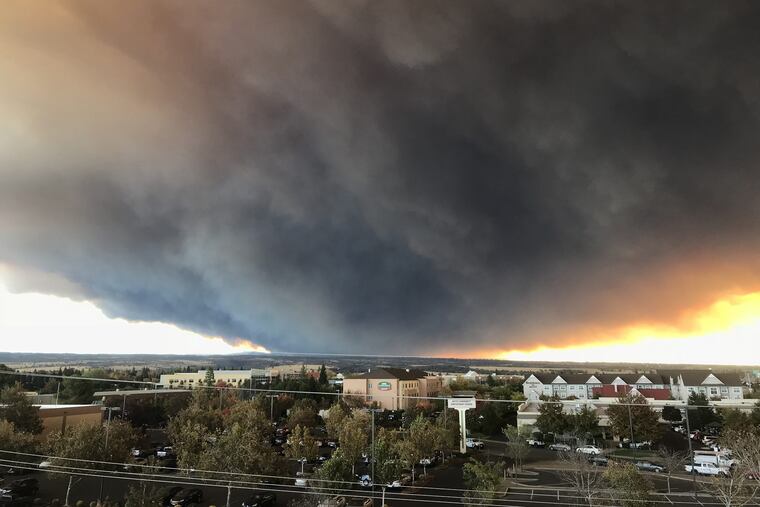The apocalypse is not coming. It’s here. | Opinion
When smoke from California wildfires is reaching the East Coast, we've reached the point of cataclysm.

Last week, I was discharging my humble duties as Family Dog Walker, wandering with Simon, our dachshund-greyhound mix, through the midnight paths and lanes of our Jersey village.
And it was foggy, a muted haze I hadn't noticed before.
Next night, there it was again. Odd mist haloed the streetlamps and windows. I wrote it off as quick-settling autumnal fog.
It wasn't fog at all. It was smoke from the California wildfires, carried aloft for thousands of miles in a "smoke plume" that spread right over New Jersey. On Nov. 19, the National Oceanic and Atmospheric Administration released a "smoke map" of the continental United States, showing a murky river in the sky, flowing southeast from California, across Texas, then up northeast across New Jersey and out to sea.
California is far away – until you realize you've been inhaling particulates from the immolation of more than 150,000 acres of forest and brush. That connects you, reminds you that, for all our borders and regions, we live our lives on a continuum of place and time.
I have personal reasons for feeling connected. I grew up in Southern California, at the base of foothills that caught fire many a summer or fall. The flames never got quite to my family's house, but, directed by local firefighters, we often had to train the garden hose on our roofs and walls. We were evacuated a few times, and we knew people whose houses were damaged or destroyed.
On the third night, before rain helped dampen the Northern California fires, out I went again with Simon for his late-night walk in our Jersey town. There again was that haze, less, but still there, a veil of misfortune over a village that didn't know.
What I was seeing and inhaling was cataclysm. Any fire that has wreaked $7 billion in havoc, cost 85 lives and counting, has involved hundreds of people whose whereabouts are, chillingly, "unknown," and can drape its ashen blanket over a continent – well, it qualifies for that title, wouldn't you say?
And we're connected. We're living it. And if we are, why don't we believe we are?
We have a way of thinking about cataclysm and apocalypse, always saying, "They're coming," never "They're here, and we are living them." A lot of comics, TV shows, films, and politics are based on these habits of thought. We invoke them because somewhere deep within, we don't really believe in them.
Meantime, a 1,656-page scientific report issued by 13 federal agencies, released on Friday (also known as Hope Nobody Sees This Friday) says climate change could lop off 10 percent of gross domestic product by 2020.
Still, disbelief persists. The costs of belief are too great. The moment we say, "Catastrophe is here. Apocalypse Now is no movie," everything will change, and it will hurt.
But as long as we can say, "It's coming," we can live as if it will never come. Wasn't that what I was doing that third night, bumbling through haze, tragedy throwing its voice, just to walk a dog? Well, I had to. It's my job. Simon expects it.
John Timpane is an arts reporter for The Inquirer and was commentary page editor from 1997 to 2008.